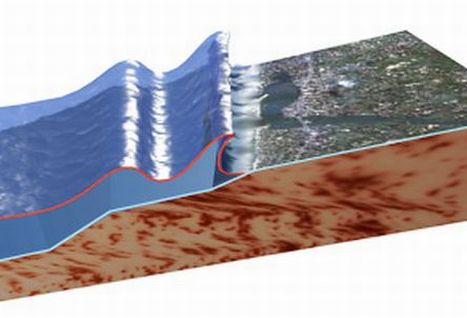
You may have heard about devastating tsunamis occurring in varied parts of the world. These dangerous tsunamis are formed when a series of waves generates in a vast water body like an ocean. If you have always wondered about the reasons behind the formation of tsunamis, then let us tell you more about it.
Basically, the process starts when an intense disturbance is caused in the tectonic plates of Earth. If tectonic plates under the sea or ocean are disturbed by an earthquake or landslide, then the overlying water also starts moving up and down. This causes the formation of big waves in the water body. The same disturbance can also happen at times due to some meteorite impact or the eruption of a volcano.
The random water movements lead to water displacement. When this happens under the effect of gravity, tsunami waves are generated. These waves keep forming until the displaced water once again finds a settling position and becomes stable. It only settles when the sea floor becomes stable. On the other hand, let us tell you that not all earthquakes or landslides under the sea lead to tsunamis.
Tsunami waves are only formed when earthquakes or other disturbing events are of very high intensity. Their force has to be sufficient enough to cause the displacement of such a huge amount of water as is present in a large water body. While a tide also causes the formation of a series of waves, the scene varies in case of tsunamis. A regular tide may not cause destruction. On the other hand, a tsunami is highly destructive to property and lives.
At times, tsunamis occur in such bad forms that they take away entire cities along with their waves. They do not lose their intense energy even after crossing vast oceans. Thus, you can imagine the force generated by earthquakes or volcanoes that leads to unlimited destruction in the form of tsunamis.